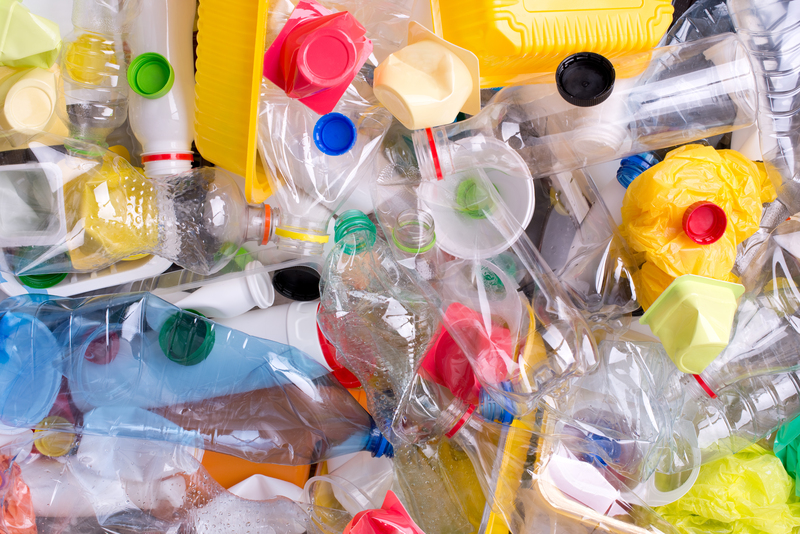Smart Strategies for Disposing of PPE Waste Safely and Responsibly
The global pandemic drastically increased the use of Personal Protective Equipment (PPE), such as masks, gloves, and face shields. While PPE plays a vital role in safeguarding public health, improper disposal of PPE waste has become a significant environmental and health concern. If not handled correctly, discarded PPE can harm wildlife, contaminate water sources, and pose biohazard risks to sanitation workers and communities. This comprehensive article explores smart, safe, and responsible methods for PPE waste disposal, examining challenges, sustainable solutions, and the role of individuals and organizations in minimizing the impact.
The Importance of Proper PPE Waste Disposal
PPE waste management is more than just a matter of environmental cleanliness; it is crucial for preventing the spread of infectious diseases and protecting ecosystems. Single-use PPE items are often made from plastics and synthetic fibers, which can take decades to degrade. Consequently, adopting responsible PPE disposal strategies is essential for safeguarding human health and the environment.
- Public Health: Improperly discarded PPE can serve as a vector for diseases, facilitating the spread of infections.
- Environmental Protection: Plastic PPE items contribute to land and marine pollution, threatening wildlife and natural habitats.
- Compliance: Following PPE waste regulations helps organizations and individuals avoid legal repercussions and fines.

Classifying PPE Waste: Understanding the Types
Different types of PPE waste require unique disposal strategies. Understanding these distinctions is the first step in responsible waste management.
Single-Use PPE
- Masks (surgical, N95, cloth with filters)
- Gloves (latex, nitrile, vinyl)
- Gowns
- Face shields and goggles
Reusable PPE
- Fabric masks
- Washable gowns
- Reusable gloves
- Protective spectacles
Note: Single-use PPE is typically more challenging to dispose of responsibly due to its synthetic composition. Reusable PPE can often be sanitized and reused but may need eventual safe disposal after their lifecycle.
Major Challenges in PPE Waste Disposal
The surge in PPE usage has exposed several disposal challenges:
- Sheer Volume: Billions of PPE items are discarded worldwide each month.
- Lack of Awareness: Many people dispose of PPE with general waste, risking contamination and recycling issues.
- Biohazard Risk: Used PPE may be contaminated, endangering waste handlers and communities.
- Environmental Impact: Plastics from PPE persist in soil and oceans, impacting ecosystems.
Legal Guidelines and Best Practices
Countries and municipalities have established regulations for PPE waste disposal. Adhering to these is essential for compliance and ethical responsibility.
- Follow local disposal designations for medical or infectious waste.
- Use dedicated PPE waste bins where provided.
- If at home, seal used PPE in a bag before discarding with household waste, unless otherwise directed.
Smart Strategies for Responsible PPE Waste Management
To minimize the health and environmental risks of improper PPE disposal, consider these smart and safe strategies:
1. Segregation at Source
Proper segregation is the cornerstone of safe PPE waste management. Place used PPE in clearly labeled, dedicated bins, separate from other waste streams. This prevents cross-contamination and facilitates appropriate downstream handling. Use color-coded bags (typically red or yellow) for infectious or biohazardous waste as per local regulations.
- Workplaces and healthcare settings should provide labeled disposal stations for staff and visitors.
- Households can use a designated container for masks and gloves.
2. Safe Containment and Handling
Ensure that used PPE is securely contained before disposal to minimize contact and leakage. Wearing gloves and washing hands after handling discarded PPE further reduces risk.
- Double-bagging is recommended for visibly soiled or high-risk PPE.
- Never touch used PPE with bare hands.
- Do not compact bags--leave air space to prevent rupture.
3. Adhere to Local PPE Waste Disposal Guidelines
Always check for municipal and national disposal instructions. Some areas offer special PPE collection services or designated drop-off points.
- Contact local waste management authorities for up-to-date protocols.
- Participate in community take-back programs where available.
4. Incineration and Autoclaving
Medical incineration and autoclaving are recognized as effective ways to neutralize and render biohazardous PPE safe for final disposal. Hospitals and clinics often partner with licensed facilities to manage PPE waste streams in this manner, ensuring pathogens are destroyed.
5. Exploring Biodegradable and Recyclable PPE Options
Advances in materials science have led to biodegradable PPE products and recyclable alternatives. While these may cost more, their lower environmental footprint is significant. Whenever possible, opt for:
- Compostable masks and gloves
- PPE made from recycled materials
- Reusable PPE (properly washed and sanitized between uses)
6. Educating and Engaging the Community
Awareness campaigns and training can improve safe PPE waste disposal practices across all sectors. Providing clear instructions, signage, and tutorials helps reduce accidental contamination and littering.
- Distribute flyers or post guidelines in community spaces.
- Engage staff with regular training on correct PPE handling and disposal.
7. Implement PPE Take-back and Recycling Programs
Large organizations can collaborate with recycling companies to collect and process used PPE. Specialized processes exist for converting masks and gloves into energy or raw materials for new products. While not universally available, these programs are expanding worldwide.
- Participate in mask recycling drop-off services where offered.
- Support businesses developing circular economy solutions for PPE.
8. Reduce PPE Use Where Possible
Strategic reduction is an effective source minimization strategy. For example, use reusable cloth masks when appropriate, or limit glove use to healthcare and high-risk situations, emphasizing hand hygiene otherwise. Thoughtful consumption ensures less waste is generated.
9. Protecting Sanitation Workers
Ensure that those handling waste are equipped with appropriate protective gear and are trained in PPE waste management protocols. Their safety is critical for maintaining effective waste systems.
Innovative Approaches to PPE Waste Management
Case Study: PPE-to-Fuel Conversion
Several initiatives have developed pyrolysis technologies that convert PPE plastics into fuel. This is a promising solution for reducing landfill burden and providing alternative energy.
Case Study: PPE Upcycling
Creative organizations have begun upcycling masks and gloves into construction materials, art, or insulation products. While not a complete replacement for traditional disposal, upcycling raises awareness and diverts PPE from landfills.
Advances in Biodegradable PPE
Scientists are engineering masks and gloves from plant-based polymers that degrade in natural environments. Some experimental products dissolve in water or home compost bins, although widespread adoption is still in progress.
Personal Responsibility: How Individuals Can Contribute
- Never litter used PPE in open spaces, sidewalks, or streets.
- Seal masks and gloves in a separate bag before discarding with general waste.
- Opt for reusable or biodegradable PPE wherever possible.
- Educate family and colleagues about responsible disposal practices.
- Participate in community PPE collection drives.
Role of Organizations and Government Agencies
Governments and businesses play an essential role in PPE waste strategy implementation by:
- Supplying labeled disposal stations in public and workspaces.
- Partnering with certified waste handlers for safe treatment.
- Funding research into sustainable PPE alternatives.
- Enforcing regulations against PPE littering and improper disposal.
- Organizing nationwide awareness campaigns.
Environmental Impact of Improper PPE Disposal
When PPE waste enters the environment, the consequences are severe:
- Microplastic pollution in oceans, harming marine life.
- Entanglement of animals in mask loops and gloves.
- Chemical leaching from synthetic polymers into soil and water.
- Potential transmission of pathogens through discarded contaminated PPE.

Future Directions: Sustainable PPE Waste Management
The ultimate goal is to embrace a circular economy in PPE manufacturing and disposal--reducing waste, increasing recycling, and minimizing environmental harm. Emerging strategies include:
- Designing PPE for easy recycling and safe decomposition.
- Scaling up biodegradable PPE production.
- Using AI and IoT for tracking PPE waste streams and optimizing collection routes.
- Fostering international collaboration for research and technology exchange.
Conclusion: Taking Collective Action for Safe PPE Waste Disposal
The safe and responsible disposal of PPE is an urgent, shared obligation. By adopting smart PPE waste management techniques, staying informed of local regulations, and embracing innovative solutions, both individuals and organizations can mitigate public health risks and environmental damage. Whether you're a healthcare provider, a business owner, or an everyday citizen, small steps can yield big results in creating a cleaner, safer, and more sustainable future.
Remember: Every properly disposed mask, glove, or face shield is a stride towards protecting our communities and our planet. Let's all commit to embracing smart, safe, and responsible PPE waste disposal strategies.